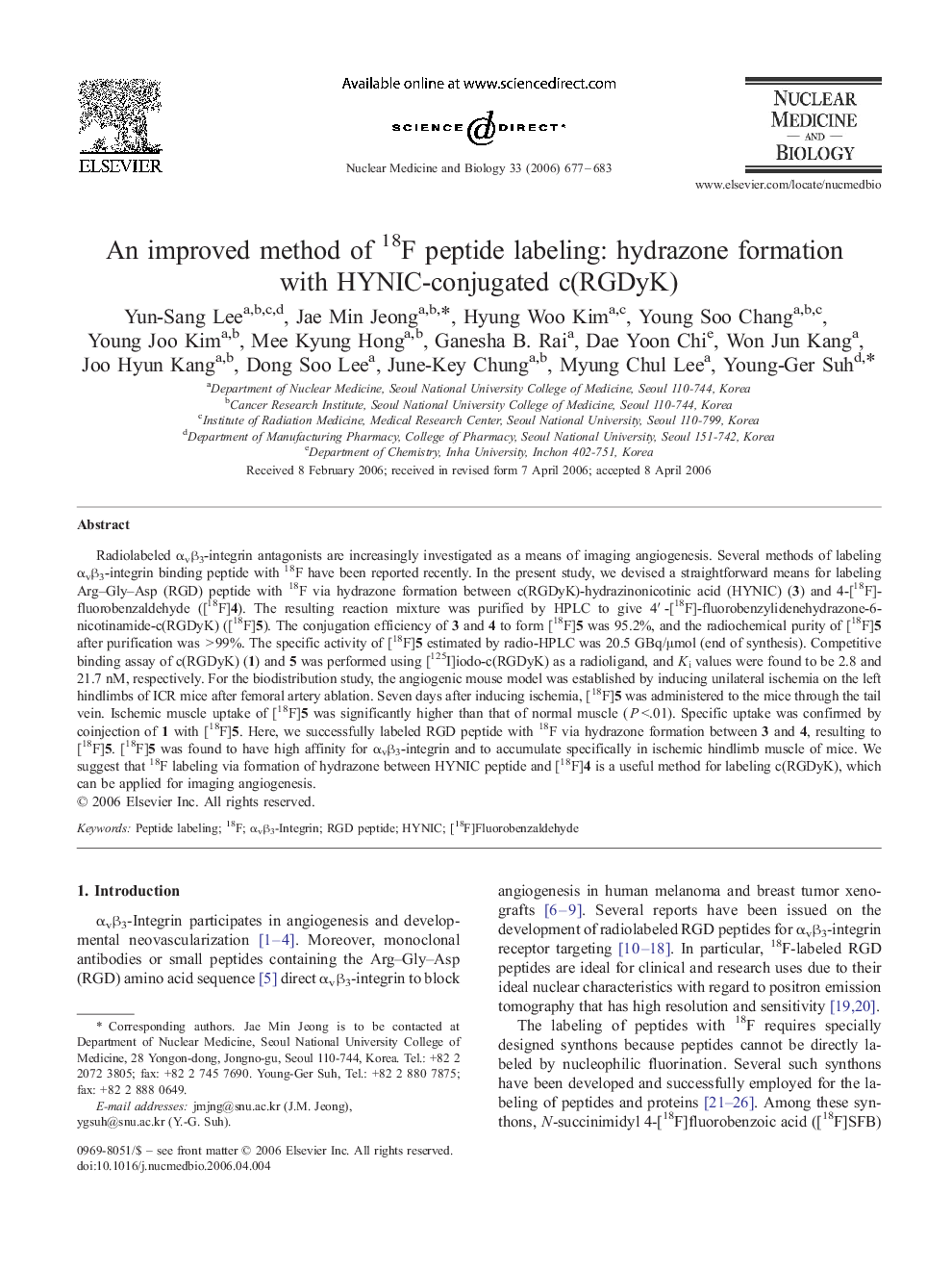| Article ID | Journal | Published Year | Pages | File Type |
|---|---|---|---|---|
| 2154819 | Nuclear Medicine and Biology | 2006 | 7 Pages |
Radiolabeled αvβ3-integrin antagonists are increasingly investigated as a means of imaging angiogenesis. Several methods of labeling αvβ3-integrin binding peptide with 18F have been reported recently. In the present study, we devised a straightforward means for labeling Arg–Gly–Asp (RGD) peptide with 18F via hydrazone formation between c(RGDyK)-hydrazinonicotinic acid (HYNIC) (3) and 4-[18F]-fluorobenzaldehyde ([18F]4). The resulting reaction mixture was purified by HPLC to give 4′-[18F]-fluorobenzylidenehydrazone-6-nicotinamide-c(RGDyK) ([18F]5). The conjugation efficiency of 3 and 4 to form [18F]5 was 95.2%, and the radiochemical purity of [18F]5 after purification was >99%. The specific activity of [18F]5 estimated by radio-HPLC was 20.5 GBq/μmol (end of synthesis). Competitive binding assay of c(RGDyK) (1) and 5 was performed using [125I]iodo-c(RGDyK) as a radioligand, and Ki values were found to be 2.8 and 21.7 nM, respectively. For the biodistribution study, the angiogenic mouse model was established by inducing unilateral ischemia on the left hindlimbs of ICR mice after femoral artery ablation. Seven days after inducing ischemia, [18F]5 was administered to the mice through the tail vein. Ischemic muscle uptake of [18F]5 was significantly higher than that of normal muscle (P<.01). Specific uptake was confirmed by coinjection of 1 with [18F]5. Here, we successfully labeled RGD peptide with 18F via hydrazone formation between 3 and 4, resulting to [18F]5. [18F]5 was found to have high affinity for αvβ3-integrin and to accumulate specifically in ischemic hindlimb muscle of mice. We suggest that 18F labeling via formation of hydrazone between HYNIC peptide and [18F]4 is a useful method for labeling c(RGDyK), which can be applied for imaging angiogenesis.
